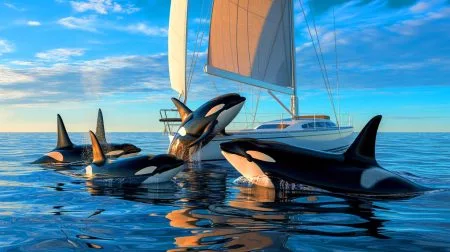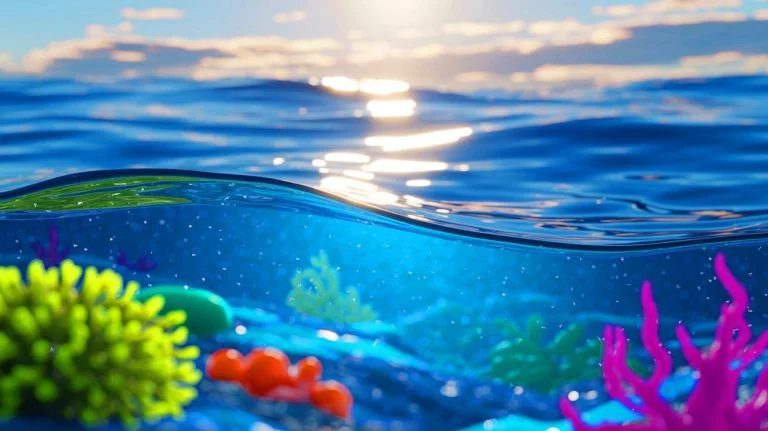| IN A NUTSHELL |
|
The discovery of a staggering 30 million tons of nanoplastics adrift in the North Atlantic Ocean has sent shockwaves through the scientific community. This monumental finding by researchers from the Royal Netherlands Institute for Sea Research and Utrecht University shines a harsh light on the silent crisis unfolding beneath our ocean surfaces. These nearly invisible particles, smaller than one micrometer, represent the first real estimate of nanoplastic pollution, revealing a threat that can no longer be ignored. As we delve into this unfolding environmental catastrophe, the implications for both marine ecosystems and human health demand urgent attention.
Unveiling the Hidden Menace
In a groundbreaking study, scientists have highlighted that nanoplastics now outnumber larger micro- and macroplastics in the North Atlantic, an alarming revelation given the already known hazards of plastic pollution. The research team embarked on an extensive four-week expedition aboard the research vessel ‘RV Pelagia’, collecting water samples from twelve strategic sites. Through meticulous filtration and advanced mass spectrometry analysis, they identified plastic molecules that had eluded traditional ocean surveys.
Helge Niemann, a researcher at NIOZ, emphasized the gravity of the situation: the astonishing volume of nanoplastics suggests a pervasive and insidious form of pollution. The study, led by master’s student Sophie ten Hietbrink, not only quantified the nanoplastics but also underscored their potential to infiltrate marine and terrestrial food webs, posing a significant threat to biodiversity and human health alike.
Tracing the Journey of Nanoplastics
The origins of these nanoplastics are multifaceted. Larger plastic debris, upon exposure to sunlight, undergoes photodegradation, breaking down into microscopic fragments. Additionally, river runoff and atmospheric deposition serve as conduits, transporting these tiny particles into oceanic waters. The ability of nanoplastics to travel through the air before settling on the ocean surface is particularly concerning.
Once in the ocean, these particles integrate into the marine ecosystem, affecting organisms ranging from plankton to apex predators, including humans. Disturbingly, nanoplastics have been detected in human brain tissue, raising red flags about their potential health impacts. This discovery also addresses the longstanding puzzle of “missing plastic”, the discrepancy between global plastic production and what is accounted for in environmental surveys.
Implications for Ecosystems and Human Health
With nanoplastics infiltrating the marine food web, the potential repercussions are profound. Scientists caution that these particles can breach biological barriers, posing risks to marine life and humans alike. As they accumulate in the tissues of marine organisms, they may disrupt physiological processes and lead to unforeseen ecological consequences.
Moreover, the presence of nanoplastics in human tissues warrants a thorough investigation into their long-term health effects. The study’s findings underscore the urgent need for comprehensive research to understand the extent of this pollution and its ramifications. With a €3.5 million grant, the research team plans to explore the dominance of specific plastic types and the prevalence of nanoplastics in other oceans, aiming to fill the gaps in our understanding of this invisible threat.
A Call to Action
The inescapable reality is that the damage caused by nanoplastics is irreversible. As Helge Niemann aptly warns, the existing pollution cannot be cleaned up, emphasizing the critical need to prevent further plastic pollution. This study serves as a clarion call for immediate and decisive action to curtail plastic waste and mitigate its environmental impact. Policymakers, industries, and individuals must collaborate to develop and implement sustainable solutions that reduce plastic production and enhance waste management practices.
Published in the journal Nature, this research highlights the pressing need for a global response to the burgeoning crisis of nanoplastic pollution. As scientists continue to unravel the complexities of this invisible threat, society faces a pivotal moment: will we rise to the challenge and protect our oceans for future generations?
The revelation of 30 million tons of nanoplastics in the North Atlantic is a stark reminder of humanity’s impact on the planet. As we grapple with the implications of this discovery, the question remains: how will we address the invisible pollutants threatening our oceans and our future?
Did you like it? 4.4/5 (27)






Wow, 27 million tons of nanoplastics? That’s a mind-boggling amount! How can we even begin to clean this up? 😱
Is there any hope for reversing this trend, or are we too late? 🕰️
Great article, but I’m curious, how do nanoplastics end up in human tissue?
That’s so sad for the marine life. What can individuals do to help reduce plastic pollution?
Is this the same plastic issue that’s causing fish to die in the Pacific Ocean?
So, are we basically eating plastic whenever we eat seafood now? 🤔
What’s next, plastic rainbows? Just when you thought things couldn’t get worse. 🌈🤦♂️
Thank you for raising awareness about this critical issue. We need more articles like this!
I wonder how this will affect industries that rely heavily on ocean resources.
Are there any specific policies being proposed to tackle this nanoplastic crisis?
Can someone explain how nanoplastics are different from microplastics?